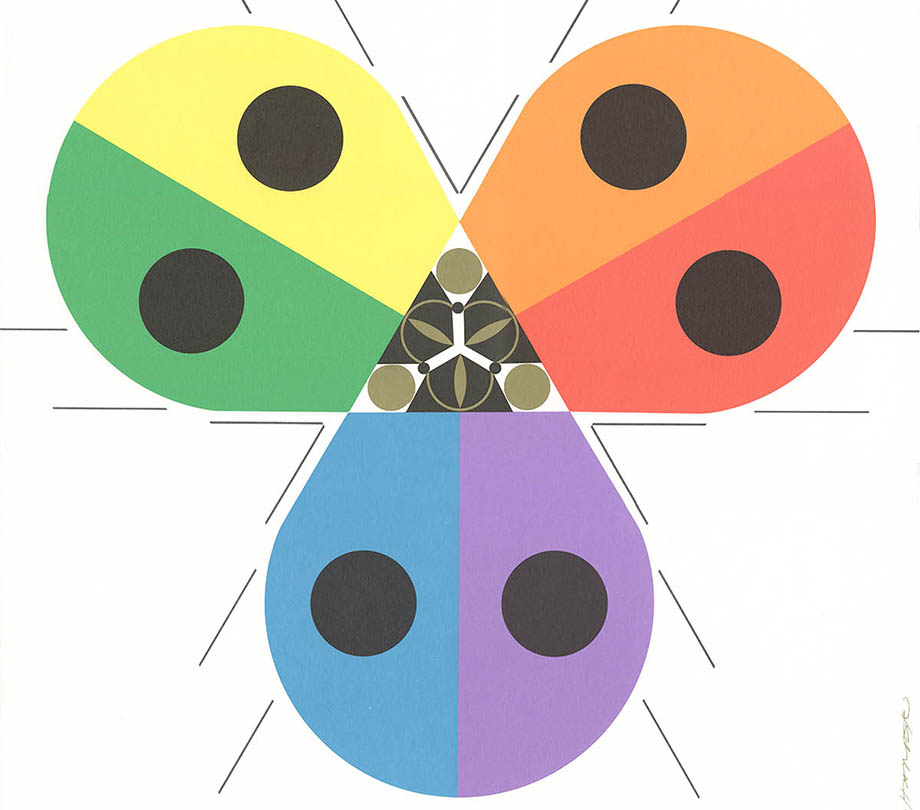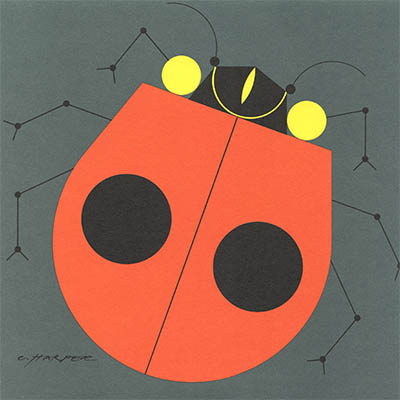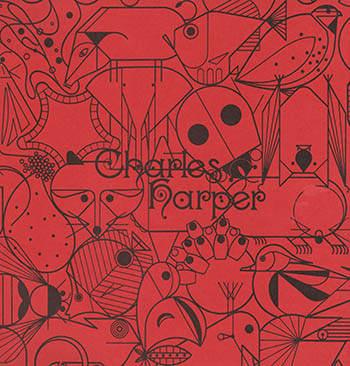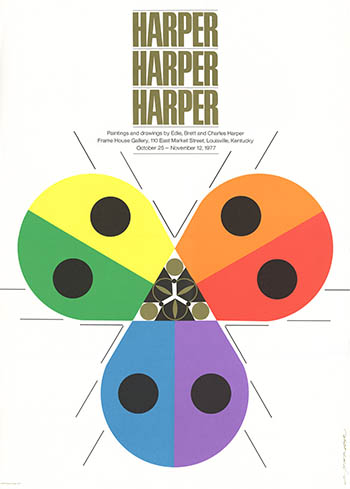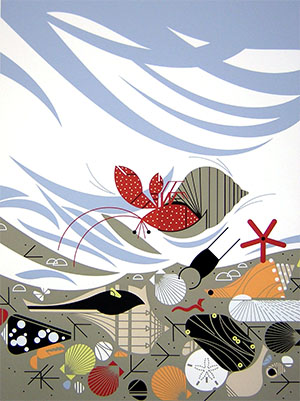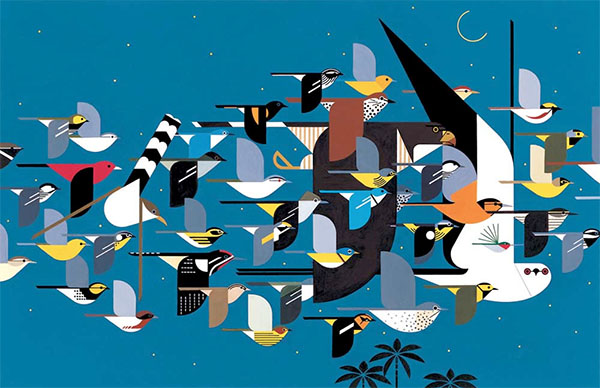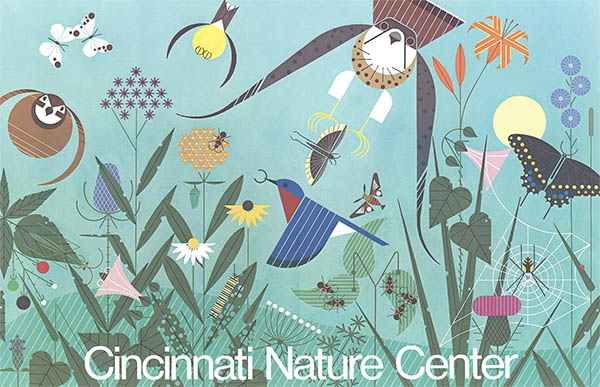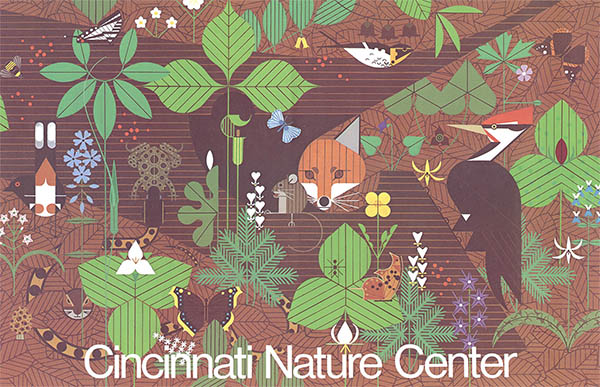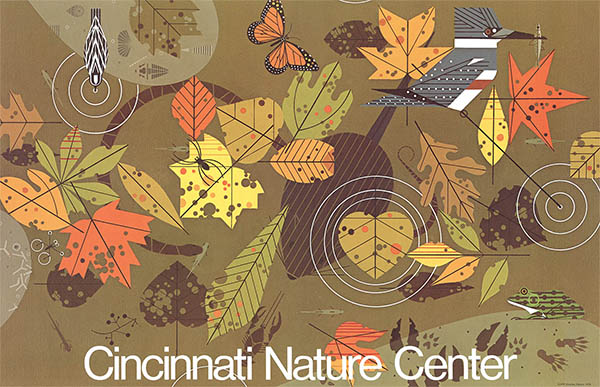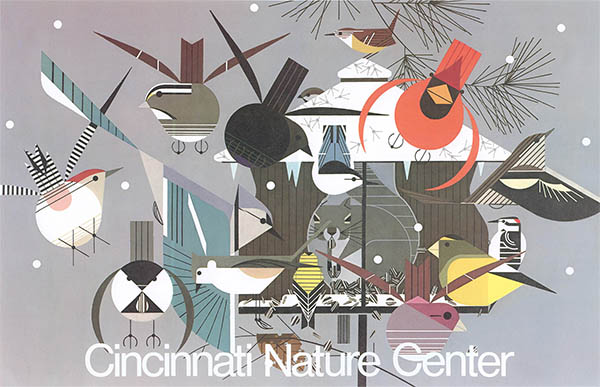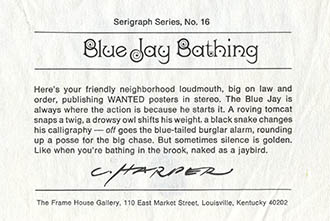Blue Jay Bathing
Charley Harper as an Artist: 1968–2006
In 1968 Charley approached Hannah Wood, Sr. of the Frame House Gallery in Louisville, KY to produced limited edition serigraphs of his work. As he stated in a letter to Wood: “some of the most traumatic experiences of my life have resulted from the difficulties and frustrations encountered in silk-screen printing. But it is the ideal process for prints of my work. And I feel that, of all printing processes, it provides the most intimate contact between artist and viewer.“
Over the next nearly 40 years Charley would produce more than 200 serigraphs in edition sizes between 500–2000.
Charley once said that he couldn't draw a straight line without a ruler or a circle without a compass and over the years his work relied more heavily on both. His loose and lyrical style of the 1940s-1950s had transformd into an increasingly refined, geometrically rigorous, and almost clinically precise style by the end of the 1960s.2
Here is some of his early Frame House work:
Unzipped, lithograph, 1970
It is simply not possible to detail the last 40 years of his output in a single post. So here are a few highlights, starting with his iconic 1970s ladybugs...
Ladybug, lithograph, 1972
Frame House folder, lithograph, 1972
Edie, Brett and Charles Harper Exhibit poster, lithograph, 1977
...and a several later works:
Crabitat, serigraph, 19987
Mystery of the Missing Migrants, lithograph, 1990
Long before it was fashionable Charley became a committed conservationalist. By the end of the 1970s he was accepting commissions only from organizations that shared his views. He did work (mostly posters) for organizations such as the Audobon Society, the Cape May Bird Observatory, the Cincinnati Nature Center, the Hamilton County Park District, the US National Park Service and the Cincinnati, Louisville and San Diego Zoos. This list goes on but you get the idea.
His posters represent some of the most compositionally complex work of his long career. Here, as an representative example, is his wonderful series for the Cincinnati Nature Center:
Spring, lithograph, 1979
Summer, lithograph, 1979
Fall, lithograph, 1979
Winter, lithograph, 1979
As Michael Beruit wrote, there was a "curious coda" at the end of Charley's career. In 2003 Todd Oldham, the rock-star fasion designer and life-long fan, struck up an unlikely friendship with Charley (who was 43 years his senior). Oldham spent five years carefully archiving Charley's vast output and published the gargantuan Charlie Harper. An Ilustrated life.x After 60 years of work, where he was known only in southwest Ohio and among conservation and birding circles, Charley became an overnight star. This new found attention left the West Virginia farm boy both bewildered and bemused.
Charley died of pneumonia on 10 Jun 2007, only days after he reviewed Oldham's galleys for the book. Edie died of Alzheimer's complications on 23 Jan 2010, and Brett, their only son, continues to manage the studio and the colossal legacy of his parents.
1. N.B.: almost everything in this post was scanned in sections and pieced together from the original sources. Sorry about the evident scan lines, although not so sorry that I intend to fix them. Here is the original label for Blue Jay Bathing:
1. In 1962 the Kentucky wildlife artist Ray Harm and the Louisville businessman/art collector Hannah Wood, Sr., founded Ray Harm Wildlife Associates with the intention of selling limited-edition prints of Ray’s work – a revolutionary idea in art marketing. The name was soon changed to Frame House Gallery Publishing Inc. and they expanded their roster of artists to include not only Harm and Harper, but other (mostly wildlife) artists including Guy Coheleach, Charles Frace, Jim Harrison and the Harper protoge Ikki Matsumoto.
After Frame house closed it’s doors ca.1991, Charley’s serigraphs were published by Somerset House Publishing and later by Mill Pond Press.
A cross-section of his serigraphs are presented in Harper, Charles. Beguilded by the Wild: The Art of Charley Harper. Gaithersburg, MD: Flower Valley Press, 1994.
x. Harper, Charley; Oldham, Todd. Charley Harper; An Illusrated Life Pasadena, CA: AMMO Books, 2007. The book with 424 19.2 x 13.2" pages weighed in at 12.2 lbs. A deluxe slipcased limited-edition with one of four reproduction serigraphs (alas, done in China) was also published. A smaller version, measuring 8.7 x 12.2" and only 5.3 lbs, was published in 2009.
10 Dec 2010 ‧ Illustration
is an occasionally updated weblog about the history of the visual arts and graphic design. Mostly this means books and their typography and illustration, maps, periodicals, photos and posters as well as other miscellaneous ephemera.
